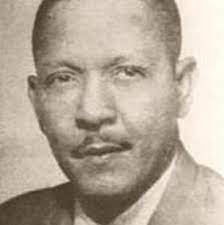
ABELARDO VALDÉS
Cuba, through time, has also distinguished itself for the outstanding musical creators who conceived works that became symbols within the Cuban popular music for reaching a great relevance both at national and international level. That is the case of a danzón identified as Almendra due to the inspiration of Ernesto Abelardo Valdés de la Cantera, known in the artistic world simply as Abelardito Valdés.
He was born on November 7, 1911 in Havana, with an innate predilection for danzón. Since his childhood, he began to study music. He received classes in music theory, solfeggio and flute.In 1921, when he was only 10 years old, his family decided that he should stop studying the flute due to a respiratory illness he was suffering from. Years later he made his debut as a member of an orchestra and played the güiro.
Abelardo Valdés was part of several orchestras, among them his father's, who was a great double bass player. Precisely, later, in other groups he also played the double bass. It was in 1938 when he composed his danzón Almendra, which became very famous, he was part of the "Hermanos Contreras" orchestra.In 1940 he created his orchestra that he identified with the name of the danzón Almendra. With his group he toured several Latin American countries.
Abelardito Valdés was also the creator of other danzones such as Horchata, Salvaje and Penicilina. The Almendra orchestra founded and directed by Abelardito Valdés was formed by prestigious musicians and managed to maintain in the early fifties, in the last century, an hour-long slot on one of the most popular national radio stations in the country, in this case Radio Progreso. To a large extent, it was also thanks to this that it became better known both nationally and in Latin America.The Almendra Orchestra made significant recordings with Dominica Verges and the Luis Plá trio. Abelardo Valdés died on December 9, 1958 in the city where he was born, Havana.
One of the oldest radio stations in the country, Radio Progreso, known as the Onda de la Alegría, was founded on December 15, 1929. Radio Progreso broadcasts 24 hours a day and is also the Cuban radio station that broadcasts the largest number of dramatized programs in our country, including novels, stories, theater, adventures, as well as children's and historical programs.
She was a relevant figure of Cuban popular music in the 50's of the twentieth century in our country. She died in Havana on January 12, 2002. Dominica stood out as a singer, pianist and guitarist. She successfully interpreted sones as well as boleros, guarachas, danzones, congas and danzonetes.
He was an outstanding composer, singer and guitarist. He was born in 1921 in Havana. Luis came from a family of musicians. In 1939 he formed a trio with Senén Suárez and Manolo Menéndez, later replaced by Gerardo Navarro (Díaz Ayala). They performed on various stages in the capital, as well as internationally. Among his works are: Jacarandosa, El madrugón, La canción del caminante, Perico sordo, Por mentirosa, La trasnochadora, Copas Amigas, among others of great prestige.